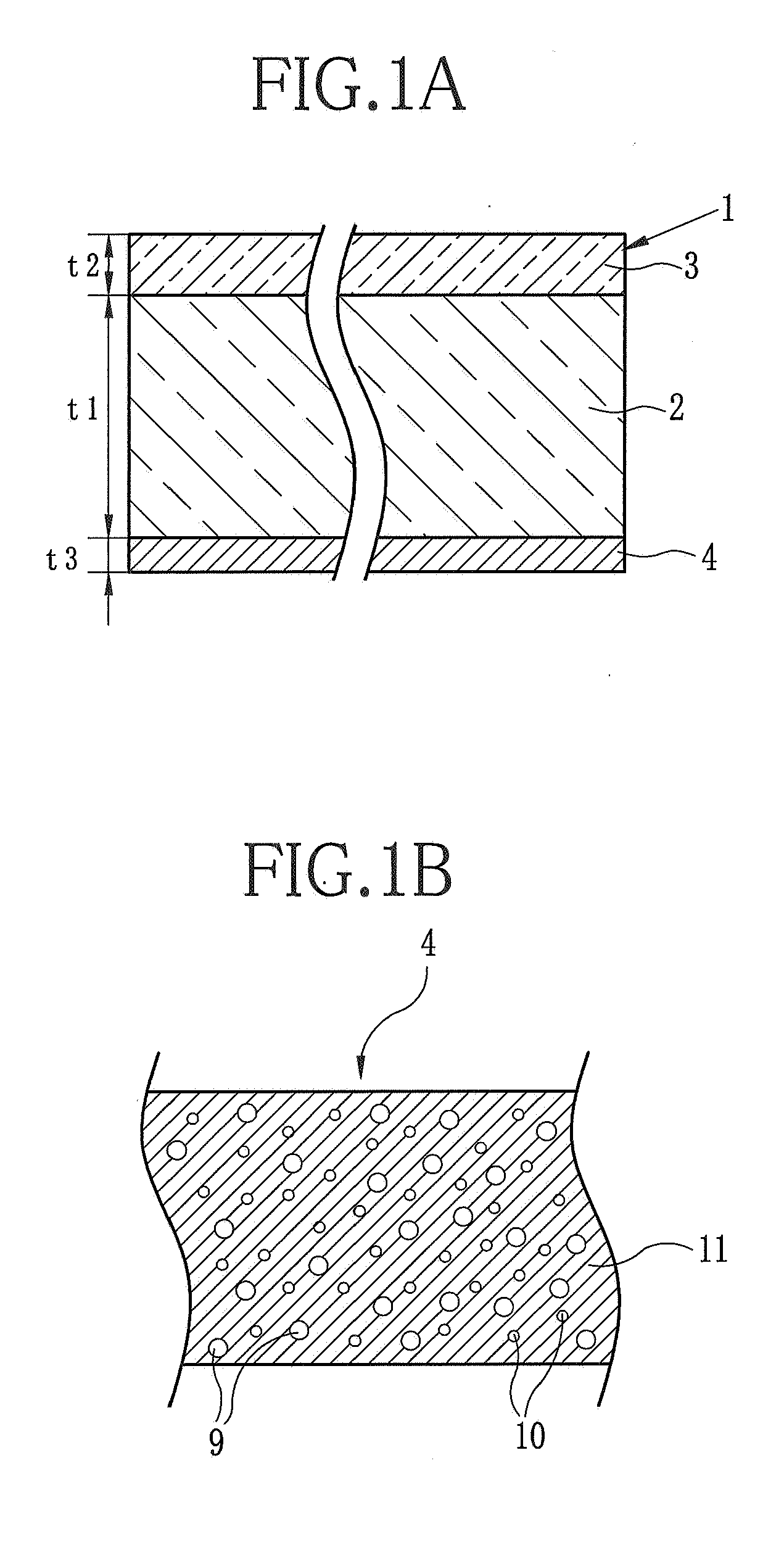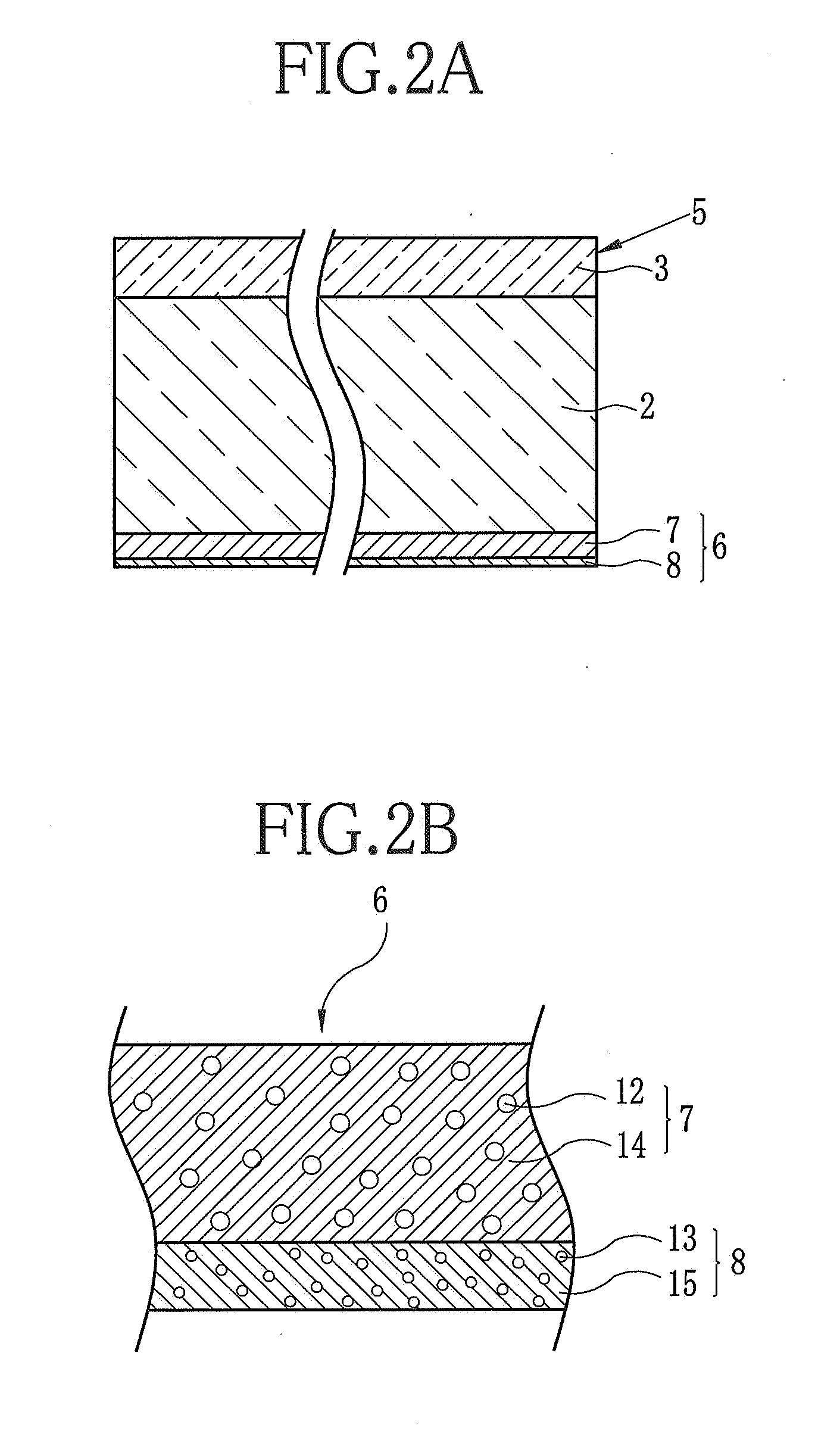Optical multi-layer sheet and image display device
a multi-layer sheet and optical technology, applied in non-linear optics, instruments, synthetic resin layered products, etc., can solve the problems of easy flaws in applying materials to the surface of the base material, decrease in image quality, and occurrence of flaws, etc., to achieve excellent resistance to flaws, improve lubricating properties, and enhance mechanical strength
- Summary
- Abstract
- Description
- Claims
- Application Information
AI Technical Summary
Benefits of technology
Problems solved by technology
Method used
Image
Examples
example
[0079] Hereinafter, in order to explain the present invention in detail, Experiments 1 to 9 were performed as examples. However, the present invention is not limited thereto. Note that Experiments 1 to 5 are examples of the present invention, and Experiments 6 to 9 are comparative examples thereof.
experiment 1
[0080] In experiment 1, an undercoat layer was formed on a first surface of the base material 2 formed of polyester, and the protective material 4 was formed on a second surface of the base material 2 such that the protective material 4 was opposed to the undercoat layer. Thus, the multi-layer sheet 1 was produced.
[0081] [Base Material]
[0082] Polyethylene terephthalate (hereinafter referred to as PET) having an inherent viscosity of 0.66 was prepared. The PET was obtained by polycondensation reaction using Ge as a catalyst. After being dried until the water content thereof became 50 ppm or less, the PET was melted inside an extruder having a heater with a temperature adjusted to approximately a constant level within a range of 280° C. to 300° C. Next, the melted PET was discharged from a die onto a chill roll subjected to electrostatic application, to obtain an amorphous film. Thereafter, the amorphous film was stretched in a transporting direction of the film by 3.1 times, and the...
experiment 2
[0094] In Experiment 2, the binder 11 for the protective material 4 was a polyester different from that in Experiment 1 (Plus coat Z687, produced by GOO CHEMICAL CO., LTD, solid content of 25%, glass transition temperature of 110° C.). Other conditions for producing the multi-layer sheet 1 were the same as those in Experiment 1.
Experimenet 3
[0095] In Experiment 3, the protective material 4 was formed under the following conditions. Other conditions for producing the multi-layer sheet 1 were the same as those in Experiment 1.
[Coating liquid for protective material]monomer (Dipentaerythritol Hexaacrylate)145 parts by mass polymerization initiator4.4 parts by mass(2,4-bis(trichloromethyl)-6-(4-N,N-diethoxycarbonylmethyl)-3-bromophenyl)-s-triazine)benzoguanamine fine particles (Epostar-M-30,1.5 parts by massproduced by NIPPON SHOKUBAI CO., LTD.,average diameter of 3 μm)lubricant (KF-412 produced by Shin-Etsu Chemical7.3 parts by massCo., LTD.)surfactant (F780F, produced by Dainippon...
PUM
| Property | Measurement | Unit |
|---|---|---|
| glass transition temperature | aaaaa | aaaaa |
| diameter | aaaaa | aaaaa |
| diameter | aaaaa | aaaaa |
Abstract
Description
Claims
Application Information
 Login to View More
Login to View More - R&D
- Intellectual Property
- Life Sciences
- Materials
- Tech Scout
- Unparalleled Data Quality
- Higher Quality Content
- 60% Fewer Hallucinations
Browse by: Latest US Patents, China's latest patents, Technical Efficacy Thesaurus, Application Domain, Technology Topic, Popular Technical Reports.
© 2025 PatSnap. All rights reserved.Legal|Privacy policy|Modern Slavery Act Transparency Statement|Sitemap|About US| Contact US: help@patsnap.com



